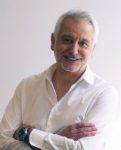
A few weeks ago I attended The City of Adelaide’s brand launch of: Adelaide. A City designed for life. In essence, it reflects on the focus of the Design of the City and how we live according to the virtues of Light’s vision, in particular, the Parklands. I must say it was refreshing to hear a presentation start by acknowledging the inherent value of storytelling and cultural heritage in our City, rather than getting caught in the advocacy of design protocols usually reserved as a prelude to the City Plan. The Adelaide City Council is to be applauded for this initiative. It should be embraced.
Having Light’s vision as the mainstay of this document is a welcome narrative that acknowledges and clearly articulates our design origins and informs the built environment.
Internationally recognised, the Adelaide Parklands are one of the greatest assets this City has. It is the most important element of Town Planning principles that we have inherited and has formed the groundwork for this City to evolve.
It is the founding design principle of our City.
Accordingly, it deserves the respect to ensure that we protect or repair the Adelaide Parklands for future generations.
The search for an evolving regional or city identity is often blurred by the promotion of the built environment. Perhaps the search for an Adelaide identity should be more vested in the landscape and cultural heritage of the Parklands rather than anything we can produce in the built form – it is our most unique identity.
But it is also so much more than this. Whether through design or by accident, the natural outer protective layer that the Parklands provide to this City is invaluable to our existence. If we allow it to, it will act as an immune system to the evolvement of the City.
Aside from their recreational values they provide a biophillic overlay that other Cities crave and retrospectively try to design for. We have ours (naturally) by design.
If some 70% of our population is projected to live in urban areas by 2050 and our cities consume 75% of our natural resources and output some 70% of CO2 emissions and if science is correct in that trees and vegetation can absorb some 40% fossil fuel emissions then we are blessed to have the Parklands as part of our City.
In these times of climate change and environmental awareness in all things of wellness and lifestyle, we need to be resilient and avoid the temptation to choke and infuse the Parklands. The City in the Park concept that Adelaide is based on offers an opportunity to future proof our City and act as a repair mechanism. The Parklands allows us this opportunity. It appears to be a recent trend that there seems to be more architecture in landscape architecture than landscape. If anything we should whenever possible strive to facilitate return and regeneration.
Accepting that our City will evolve and the Parklands need to evolve, they should be sponsoring activity, enjoyment and support well-being. Enclosures for inclusive cultural events, festivals, celebrations, sport and identity that espouse the life and celebration of our City should all be supported. They should not be sacrificed and prioritised for exclusive and commercial usage that restricts public access.
Gradually we are seeing more and more intrusion on our hallowed turf. Commercial development appendages challenging and overriding the governance of the Adelaide Park Lands Act are becoming more frequent.
Of late, a few seeds have been planted in the Parklands but they won’t be sprouting green shoots, they will be concrete shoots.
They will be exclusive patronage domains and like the heritage debate, its advocacy always reverts to economic stimulation, not cultural initiatives.
The Parklands don’t need to be activated by the built environment, the notion of the temporary enclosure can facilitate this; they need increased greenery, trees and foliage, some may say forestation, they need to breathe, and in turn, they will return the favour to let our City and People breathe.
Tony Giannone
Chapter President
